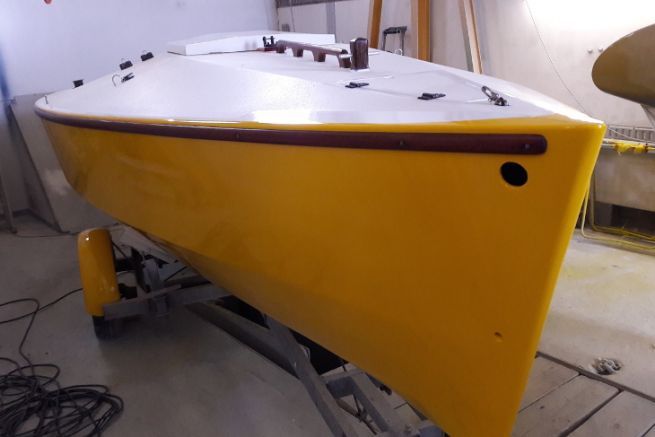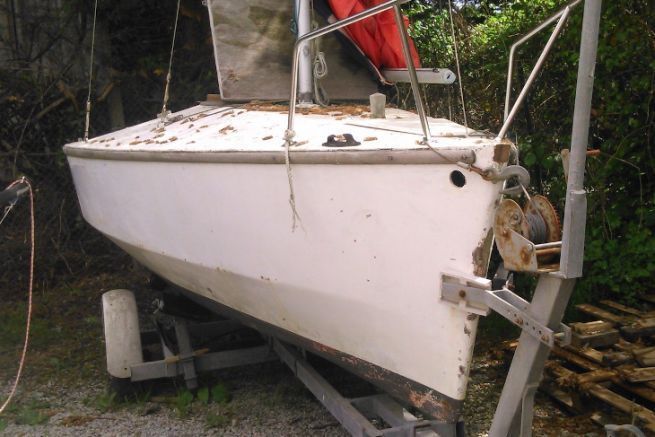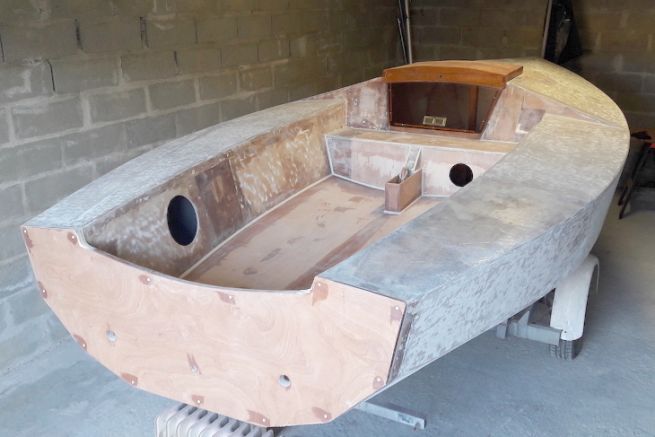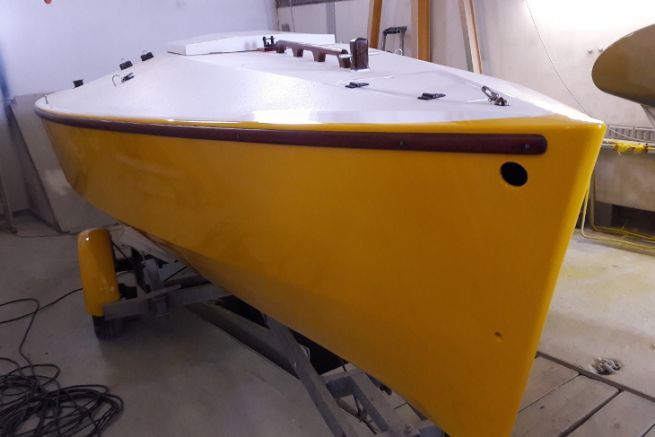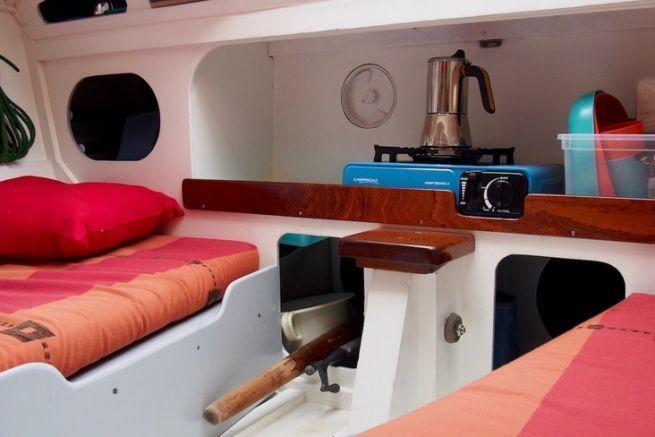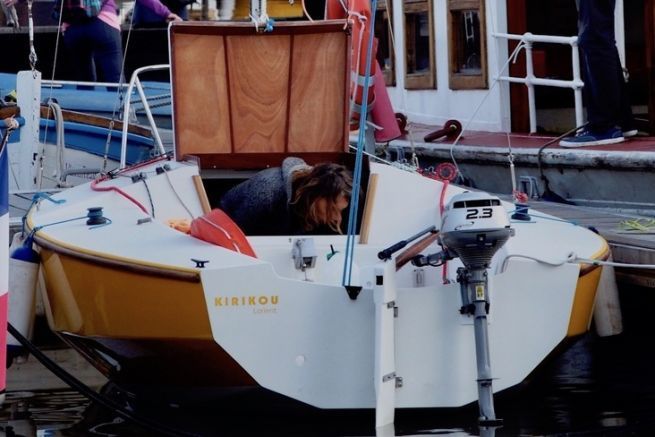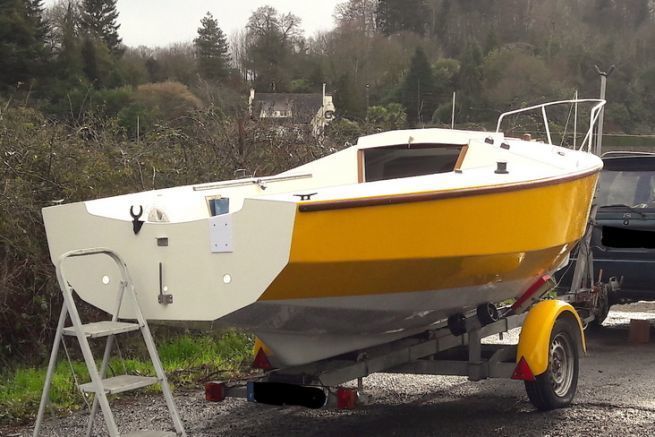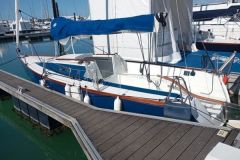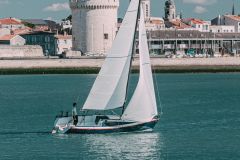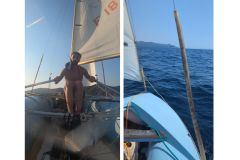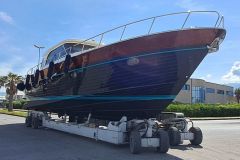Hollows are filled, dents sanded! The finishing coat is applied with a spatula as long as possible to respect the flat surfaces of a plywood hull. The sanding is done with a long flexible spacer to avoid digging. I then patiently reshape the chine lines so that they "flow". This shaping work is crucial because the paint will only highlight the slightest imperfection. During this step, I will apply two new coats of epoxy primer.
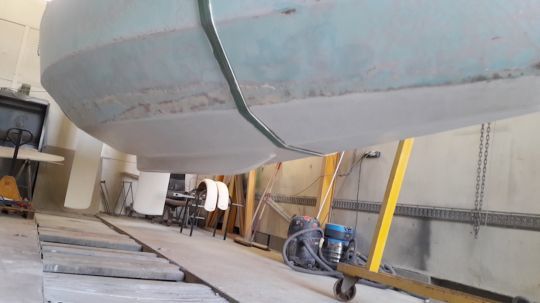
At the same time, I strip the cast iron centerboard and the ballast salmon, which receive a rustproofing treatment, a coating, and then generous coats of the same epoxy primer.
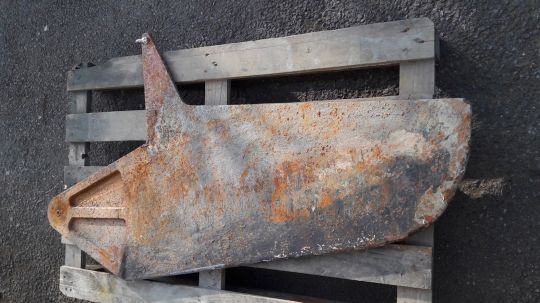
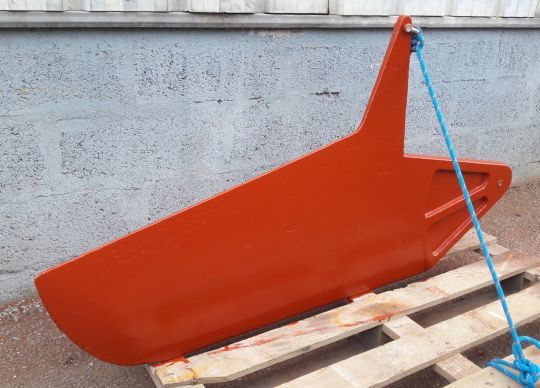
A family boat renovation
Finally comes the day of painting. The yard is equipped with a cabin that accepts boats up to 15 m. My son, whose specialty is painting, takes pride in applying one of his secret gleaming lacquers to Dad's boat, which he usually reserves for prestigious boats.
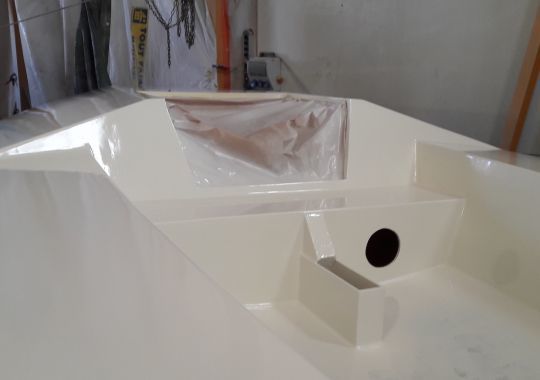
The boat is suspended by the chainplates and receives a final epoxy primer followed by a plain clear lacquer that will give depth to the yellow chosen for the planking. The hull is lacquered in white. I don't plan to use antifouling, which is useless on a boat that should not stay afloat for more than a week at a time. The coats are applied one after the other and I measure the difference between a professional application with a spray gun and another one with a paint roller, even if it was a careful one. Being a family member, I benefit from the know-how of the yard, but also from "racing" products, mostly from the Nautix range.
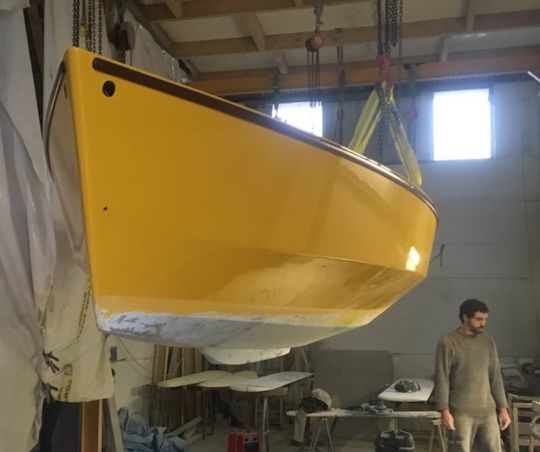
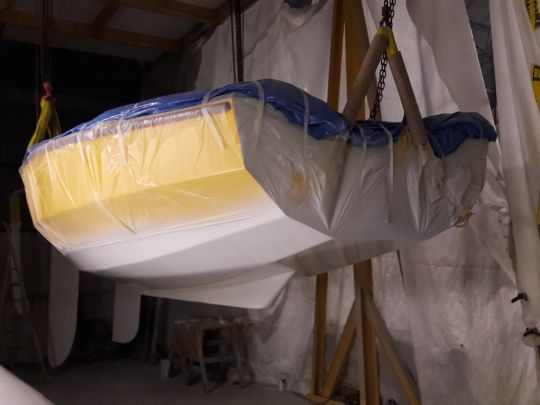
Folded in 4 to paint the cabin...
The hull is a beautiful golden yellow. The off-white deck is covered with an anti-skid coating, also sprayed. The curious and other visitors to the yard, most of whom are pure racers, are beginning to take a less condescending interest in this little yellow hull... It must be said that several recent boats have this kind of angular lines, giving this old boat a modern touch. Taking advantage of the paint hardening time, I bend over backwards to paint the inside of the cabin, which is definitely too narrow to contain the painter, the paint pot and the brush!
Overhaul of the trailer
While the boat is in the air, I take the opportunity to check the trailer. It's about the same age as the boat, but in pretty good shape. On the recommendations of the yard staff, I have protected it all the time of the work, so it doesn't get too much stained. The polyester fenders are repaired and repainted in the same color as the hull. The wheels are replaced by newer used ones and the bearings are greased. The roller axles are removed and greased and the rubber diabolos that need it are replaced by new ones. The winch is overhauled and its cable replaced by a strap. Only the brakes, definitely seized, are unusable. They still are, but they are on my to-do list...
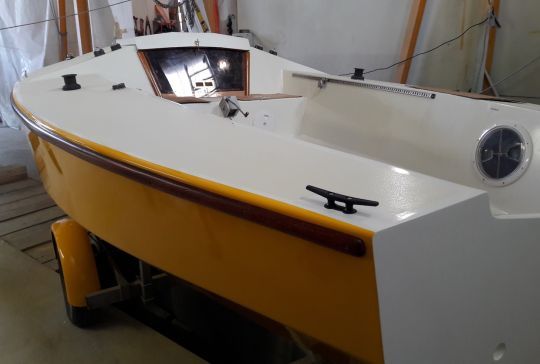
Second hand, but modern !
The pleasant work can finally begin, that which consists of fitting out, equipping and making this boat operational. The varnished listons are back in place and underline the line, then it's the daggerboard's turn to return to its well. The difficulty consists in sliding this 80 kilo piece of cast iron into the well, then moving it millimetre by millimetre so that its axis enters the hole blindly. The opening hood, the balcony and the deck fittings gradually came to dress the boat. The equipment has changed a lot in 43 years: ropes, pulleys and other cleats are no longer up to date and I replace them with all the less remorse, as the shipyard has second-hand parts that it sells to me at the "family" rate. I take the opportunity to bring back all the maneuvers to the cockpit and replace them all with new ones in modern textiles. The boat is ready and I enjoy the real comfort of doing all this work on the site of a well-equipped shipyard where the material and the skills are available without any trip or loss of time or energy.
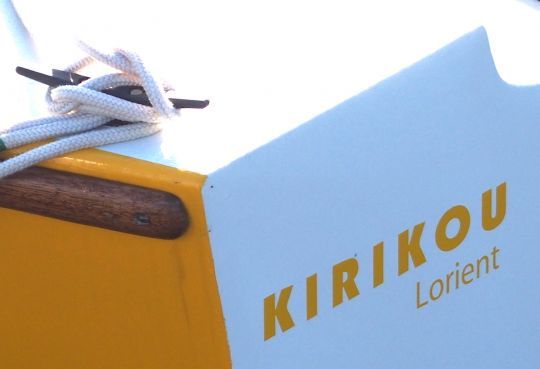

 /
/ 